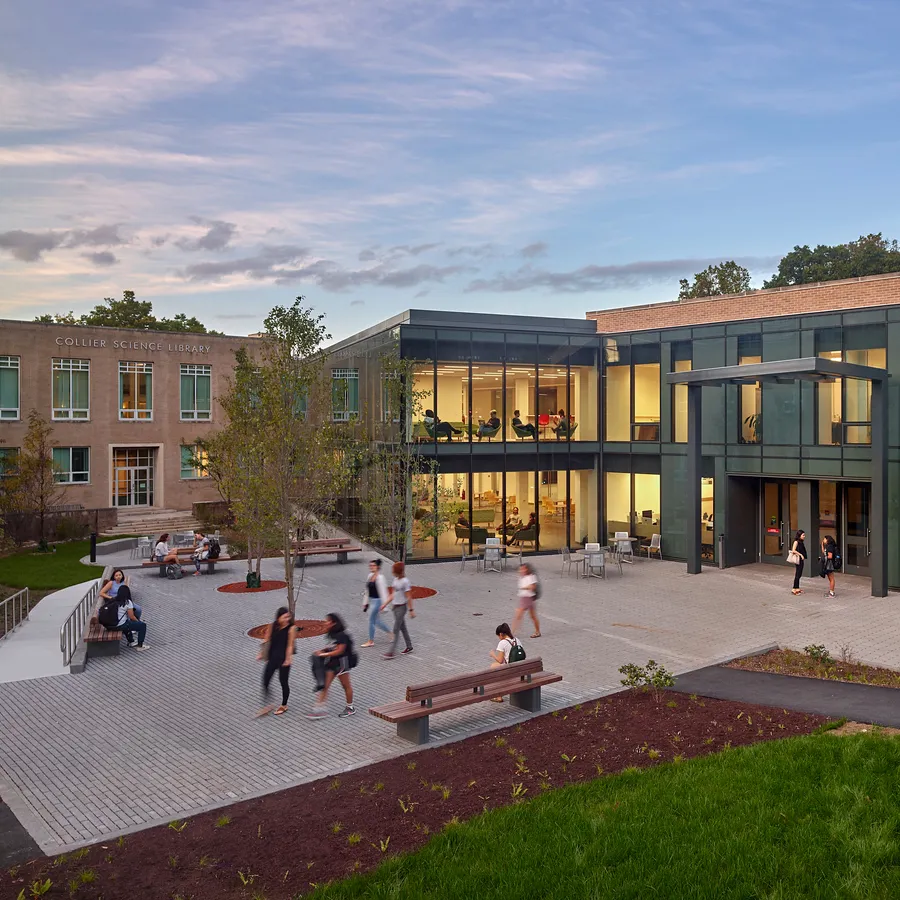Physics Research Projects 2021
Ellie Hughes and Catie Robinson
Advisor: Michael Schulz
Equivalence of the WKB and instanton semiclassical approximations
The Wentzel–Kramers–Brillouin (WKB) method can be used to approximately solve the Schrödinger equation and find allowed energies for a given potential. Similarly, instanton methods can be used to compute energy splittings in multi-well potentials due to quantum tunneling. The WKB method and the instanton method, while unrelated, yield the same results. However, this equivalence is not obvious due to the differences in the technical details of each method. The goal of this project is to demonstrate that these two methods are indeed equivalent to the same order in ħ for a specific potential where both methods are applicable, namely a double well potential consisting of two harmonic oscillators spliced together. Showing the equivalence between the WKB approximation and the instanton method for this potential will impact our understanding of the accuracy of the two approximations, which may provide new insight into the behavior of particles in different potentials.
Queenie Jiang
Advisor: Michael Noel
We will use optics and spectroscopy to cool and trap rubidium 85 and 87 atoms. Our optics consist of mirrors, lasers, glass or plastic, wave plates, modulators, and lenses. We will then excite these atoms to Rydberg states, which have high quantum numbers (n~30-40) and are weakly bound, causing these atoms to have exaggerated properties. The electric field we apply also provokes the Stark effect, splitting the atoms into several different energy levels. Pairs of these atoms form dipoles as each atom has polarity due to their valence electrons being far from the nucleus. We will then examine the dipole-dipole interactions caused.
Lily Li, Rebecca Long and Genevieve Love
Advisor: David Schaffner
Glow Discharge Model:
The Glow Discharge model is a simplified demonstration of the Bryn Mawr Experiment (BMX) which enables close observations and could be used in further undergraduate lab teachings. Through a glass chamber, the glow from a gas can be observed between the charged plates which indicates the successful creation of plasma. This experiment gives a preview of the method BMX uses to create plasma which is using a high enough electric potential to break down gas into plasma. There are characteristics of the plasma through four variables ― potential difference of the power source, distance between the electrodes (the two charged plates in this case), gas type, and the pressure of the chamber gas which is associated with the density of the molecules.
Probe Calibration for BMX:
The BMX uses small probes inserted into the main chamber to measure the magnetic field as plasma travels past them. At high enough frequencies, the probes’ induction becomes significant enough to alter the recorded data. As such we must calibrate the probes beforehand by placing them in a known constant magnetic field that oscillates in the same range of frequencies that will be present in the actual experiment so that we can calculate the probes’ error.
Catherine Opsahl
Advisor: Michael Noel
We will use optics and spectroscopy to cool and trap rubidium 85 and 87 atoms. Our optics consist of mirrors, lasers, glass or plastic, wave plates, modulators, and lenses. We will then excite these atoms to Rydberg states, which have high quantum numbers (n~30-40) and are weakly bound, causing these atoms to have exaggerated properties. The electric field we apply also provokes the Stark effect, splitting the atoms into several different energy levels. Pairs of these atoms form dipoles as each atom has polarity due to their valence electrons being far from the nucleus. We will then examine the dipole-dipole interactions caused.

Contact Us
Summer Science Research
Olga Karagiaridi
Summer Science Research Program Director
okaragiari@brynmawr.edu
610-526-5101